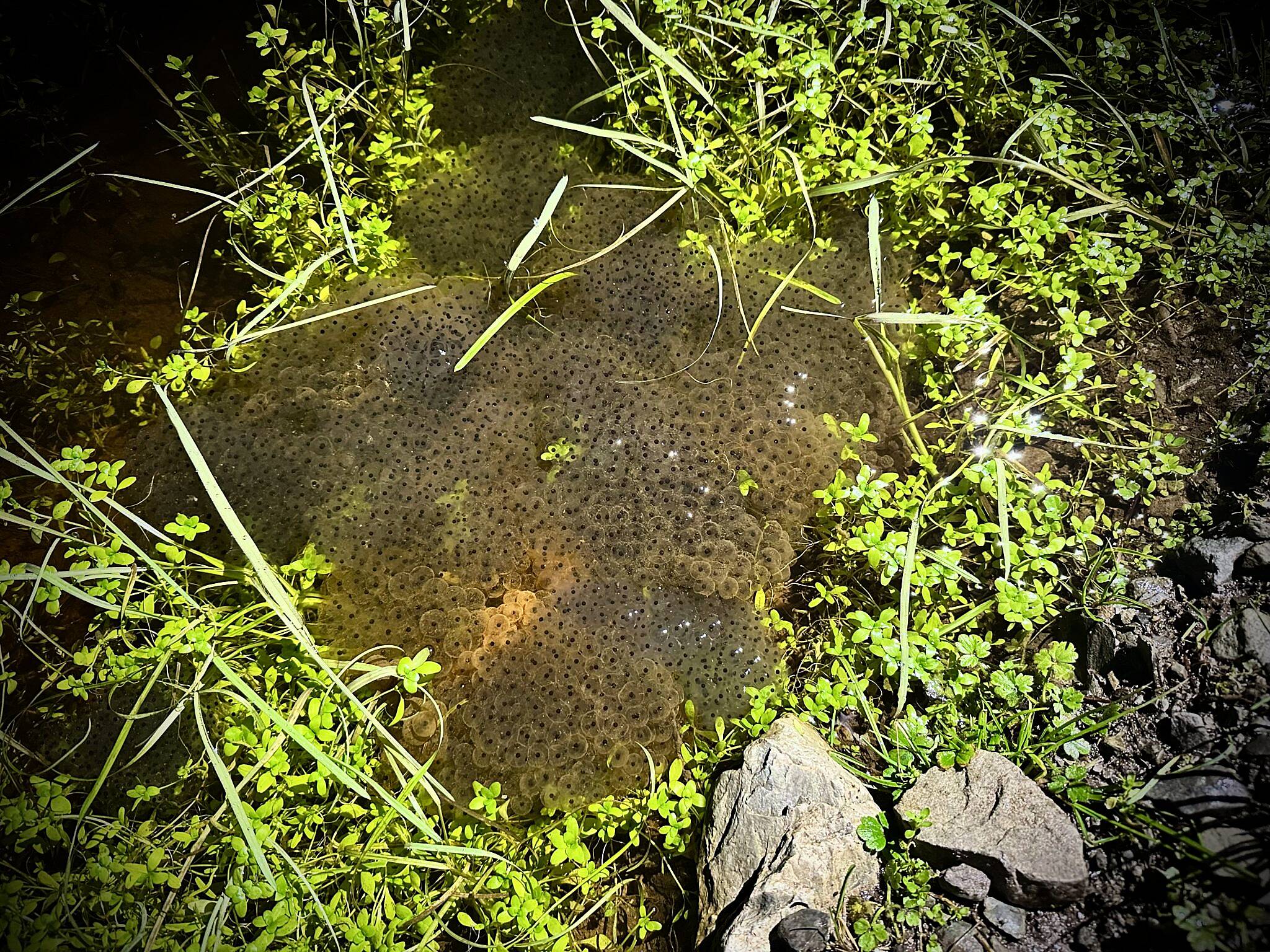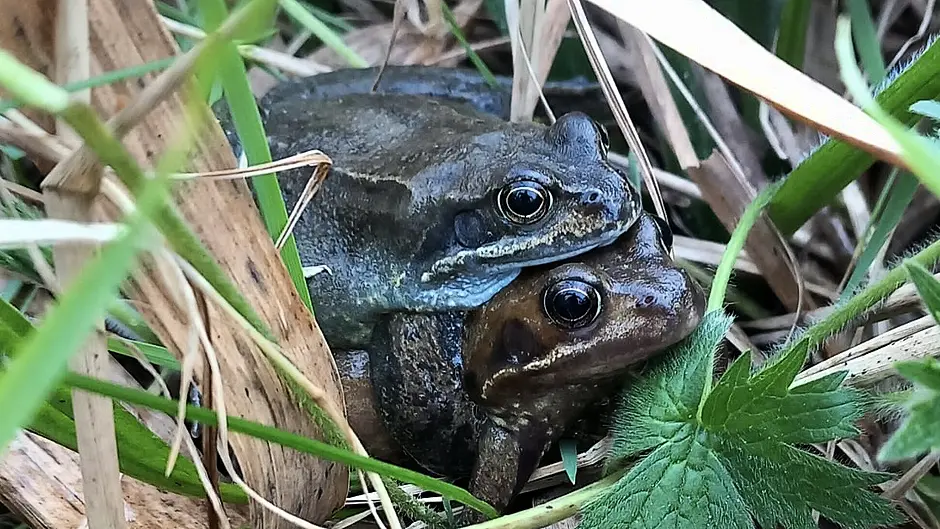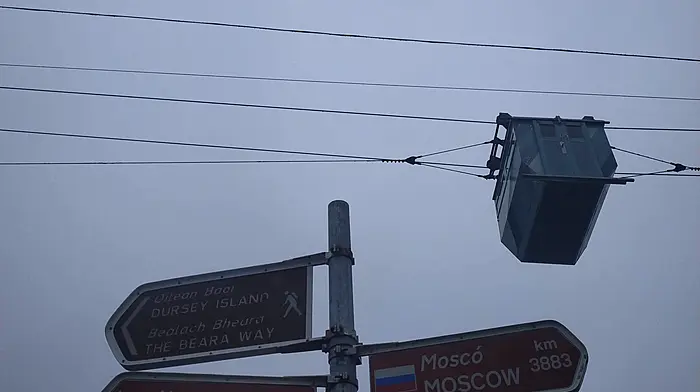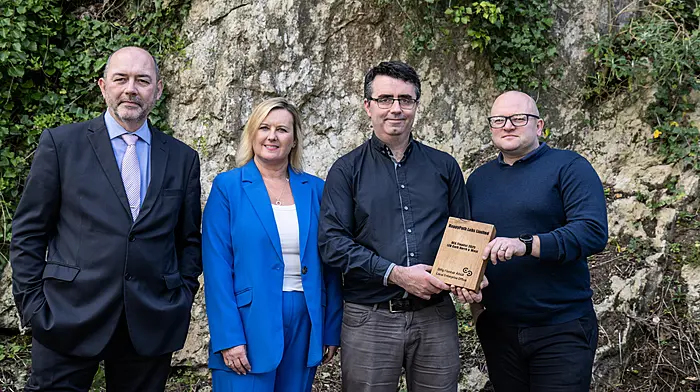
LAST November, I wrote about visiting the newly created shallow ponds beside the Joe Walsh Walkway at Gallanes Lough, Clonakilty.
These ponds are part of a conservation initiative aimed at enhancing the habitat for amphibians.
Also, as part of the project, winter shelters, known as hibernacula, were created.
This involved digging below ground and filling the space with stones and vegetation to form gaps and crevices where cold-blooded creatures can take refuge.
The shelters were then covered with a mound of vegetation and soil.
The measures introduced along the walkway are expected to primarily benefit two of our native amphibians: the common frog and the smooth newt.
Biodiversity action
This initiative at Gallanes Lough is a collaboration between Cork County Council and the Herpetological Society of Ireland (HSI).
Funding for the project has been provided by the National Parks and Wildlife Service through the Local Biodiversity Action Fund.
Although the ponds and hibernacula were only installed last autumn, the hope is that frogs and newts will begin using them and start breeding in the ponds this year.
Rob Gandola, wildlife consultant and Senior Scientist at the HSI, has been tasked, along with local residents, with monitoring the success of the project.
Late one evening last week, we joined the monitoring group to see for ourselves.
Our family was both excited and slightly starstruck, having just watched Rob co-host the four-part documentary series A Wild Irish Year on RTÉ Player.
It originally aired in 2018, but if you have not seen it yet, it is well worth a watch.
Night-time adventures
The best time to survey for newts and frogs is during the hours of darkness.
Predators of frogs and newts are less active at night, while prey such as slugs, snails, crane flies, worms and other invertebrates are more likely to be active.
These clever animals take advantage of this by emerging to hunt for food and seek mates in relative safety.
My two boys already love going for night-time walks, so they needed little persuasion to stay up a little later and join us.
The adventure of walking down a country lane in the winter darkness has a timeless appeal.
We listen out for foxes, keep an eye out for owls, and wonder about the scuttling noises in the hedges.
I look forward to the day they hear a common snipe, as it is one of the most startling and eerie sounds of all.
Snipe make an indescribable noise, known as drumming, reminiscent of a bleating goat, and is produced by the vibration of their stiff tail feathers as the bird dives through the sky during their mating display.
This usually occurs around dawn or dusk, but sometimes it may be heard on moonlit nights, causing a jolt of surprise.
The boys also love the excitement of briefly shining a torch across the fields to look for the tell-tale shine of eyes, which reveals the presence of wildlife.
They are always delighted to spot foxes, hares, and rabbits this way.
While keeping an eye out for frogs, we were also fortunate enough to spot a barn owl flying overhead.
It was a wonderful reminder that, even though the evenings are still very dark, there is plenty of wildlife to spot and hear during walks.
 Clumps of fresh healthy frogspawn at the ponds last week, a great sign of early breeding activity heading into Spring. (Photo: Ann Haigh)
Clumps of fresh healthy frogspawn at the ponds last week, a great sign of early breeding activity heading into Spring. (Photo: Ann Haigh)
Early starters
We had high hopes of finding signs of amphibian activity at the ponds.
Reports of frogspawn had been coming in from West Cork since late December, so breeding had already begun.
There were no frogs or newts on the path, but as soon as we opened the gate to the fenced-off ponds, everyone spread out with their torches.
It wasn’t long before there were jubilant cries as we discovered the ponds were being used!
There were frogs in and around the ponds, along with plenty of fresh frogspawn, and even a mating pair caught in the act.
Rob was able to measure the length and width of the area the spawn occupied and use a mathematical equation to estimate the number of clumps, and therefore the number of female frogs that had laid them.
Overall, there was clear evidence of an impressive number of frogs, especially so early in the season.
Pond vegetation
Although we didn’t see any newts this time, it was encouraging to see the growth of native vegetation in the ponds.
Water-starwort, in particular, is a valuable aquatic plant and is thriving in the new ponds.
These plants are particularly important for newts.
After mating, females use the plant’s submerged leaves upon which to lay their eggs individually.
They then roll up each leaf with their hind legs into little egg packets for protection.
It was still very early in the year for newts to have emerged from their hibernacula, but there is great anticipation that we might see them on our next visit.
Hop to it
If you spot frogspawn, tadpoles, or adult frogs, you should record your sightings.
The information submitted by citizen scientists all over Ireland can used by researchers and conservationists to help understand the status of frogs in Ireland and help them to work towards protecting them.
Options include logging the sighting with the National Biodiversity Data Centre or with the Irish Peatland Conservation Council’s Hop To It Frog Survey.
Details may be found on their respective websites.
Enjoy getting outside and beginning to spot those precious signs of spring.








